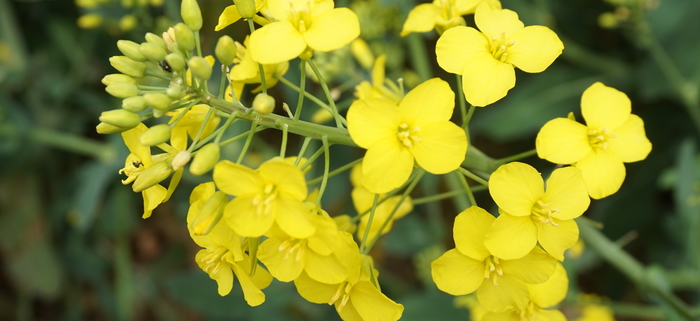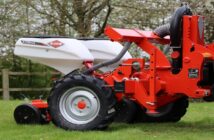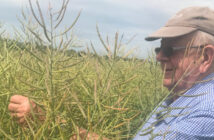Very pleasing yield results have been achieved from all varieties of oilseed rape, both conventional and hybrids grown at H.H. Craske and Son, Michael Craske’s Hadleigh-based farm in Suffolk.
This year’s crop included two conventionals – Acacia, Aardvark and hybrid Aurelia.
Mr Craske has always grown conventionals and was originally sceptical about growing oilseed rape hybrids, but last year 50% of his crop was the hybrid Aurelia which we found it was vigorous and performed very well despite difficult conditions.”
He went on to say, “After drilling, it stood in water, then in the spring we had lots of frosts, which may have affected the biomass. However, the crop was saved by the damp weather in May and June.”
His choice of variety is always careful and he assesses the different traits and resistances.
Aurelia has a good resistance package that includes Turnip Yellows Virus (TuYV) and light leaf spot, pod shatter and Phoma stem canker.
It also has ratings of 7 for stem stiffness and lodging resistance.
Conventional variety Aardvark has good resistance to light leaf spot and phoma stem canker.
As a grower with many years of experience of oilseed rape, Michael insists that choosing the right ground conditions is key to a good start, but nutrition also plays a key role.
He often plants rape behind spring barley or a second wheat which he prioritises for early harvest. This year, plans are to drill it behind winter barley as well as spring barley.
He has also planted after winter wheat with chopped straw, but if the weather is damp he advises applying slug pellets ahead of drilling and double rolling to ensure good seed to soil contact.
“We have found that unlike wheat, spring barley does not leave any residual nitrogen (N) in the soil to get rape off to a good start, so we have learned to apply some nutrition in these situations.”
Fertiliser (40kg/N/ha) is applied as soon as possible in January, to help the crop get a running start.
“We apply a total of 200kg/N/ha over the growing season up until the middle of March.”
He also uses SOYL scans for variable rate potash and phosphate and applies Polysulphate.
Last year, because of the volatility of the oilseed rape market he did not order any seed, but bought it for next day drilling when conditions were right.
“It makes a difference when it is possible to work with suppliers that are able to operate on this basis.”
For his cultivation strategy, he uses a Heva 9-leg subsoiler on a crawler, and an Accura disc seeding mechanism. The coulters follow the leg of the subsoiler and the rest of the ground is not touched.
Michael finds he gets the best results with wide rows of 50cm , with a seed rate of around 2.5 – 3.3 kg/ha.
Having dedicated approximately a fifth of the farm’s total combinable area to rape last year, the initial plan is to do the same for the 2021-2022 season.
“Despite having grown oilseed rape on the farm since 1974,there is always something new to learn; but there’s no way of getting away from the fact that the crop remains something of a lottery.”
Farm facts:
Third-generation farm founded in 1951
Farm size: 700 ha, all farmed in-house
Area dedicated to oilseed rape 2020- 2021: 128 ha
Soil: Hanslope soil series, with variations of sandy clay loam
Rotation: First wheat, second wheat, spring barley, oilseed rape, first wheat, second wheat, legume (normally winter beans, but can be peas in more difficult years).




